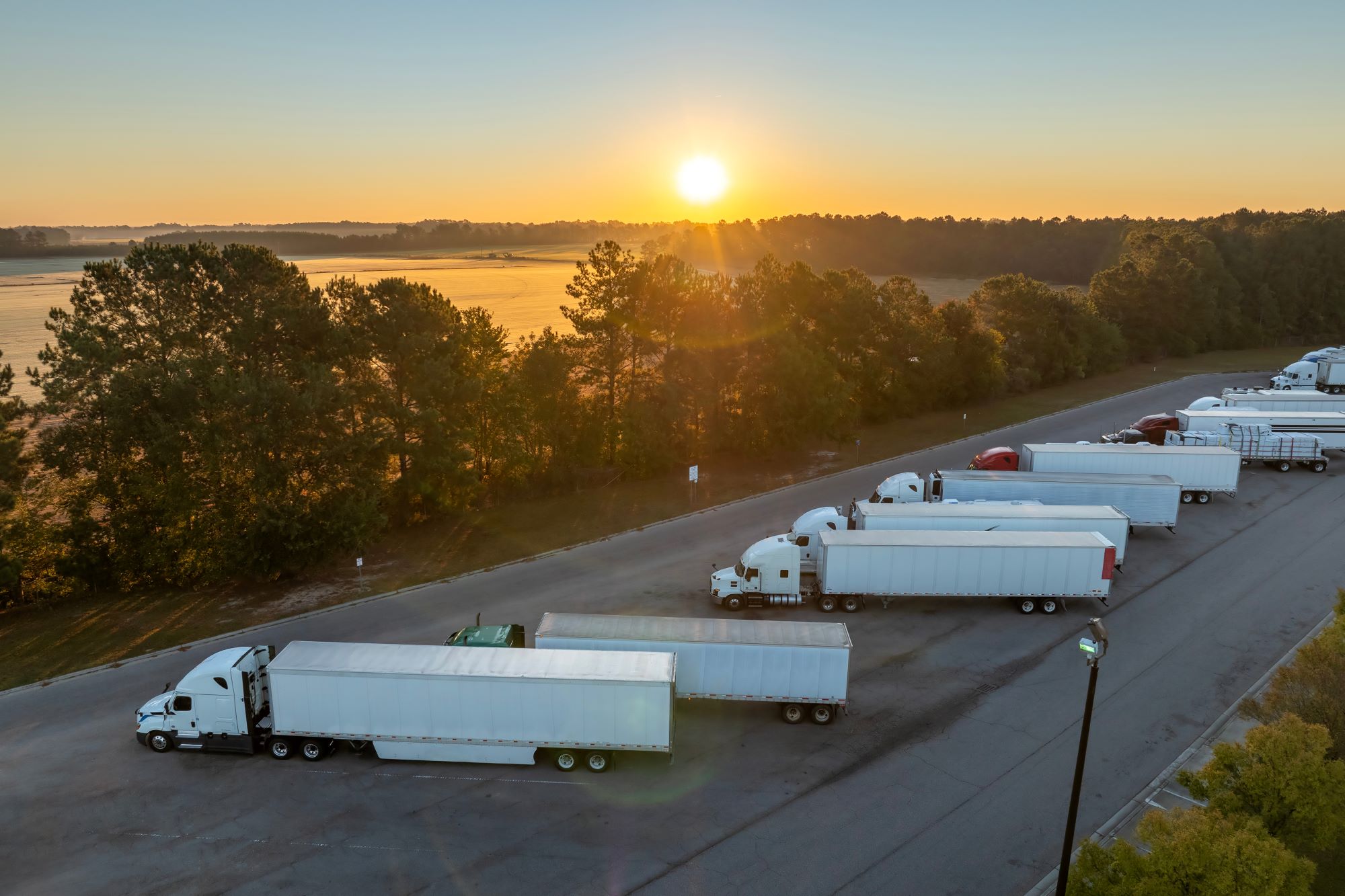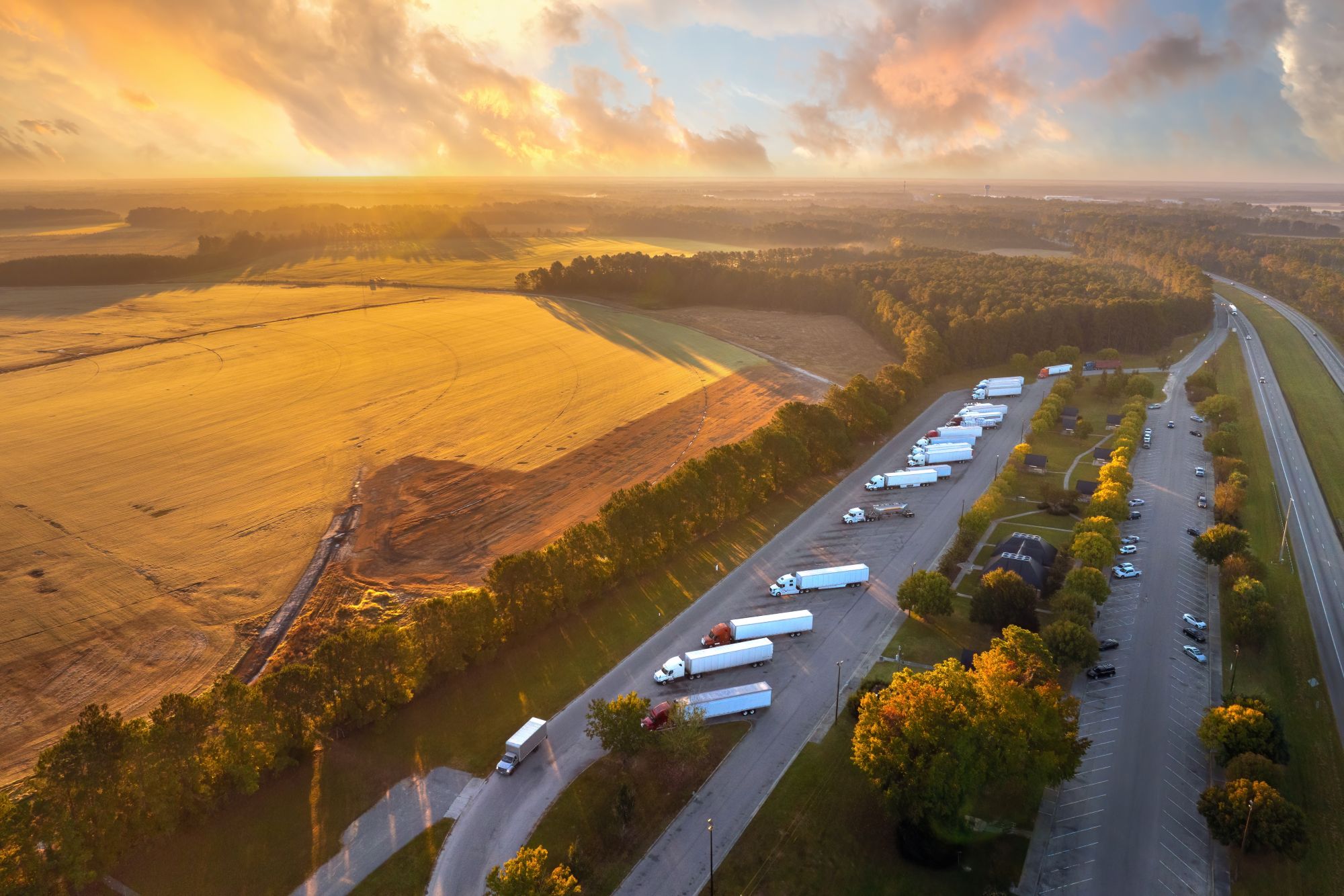
Susie Jones
Vrachtwagenchauffeurs roepen op tot hervorming van de sector
Gemaakt: 05-02-2025
•
Bijgewerkt: 05-02-2025
Momenteel vormen vrouwelijke vrachtwagenchauffeurs in het Verenigd Koninkrijk slechts 1% van alle chauffeurs - een cijfer dat de afgelopen tien jaar met 144% is gestegen naarmate er meer initiatieven werden geïntroduceerd om diversiteit te bevorderen en het tekort aan chauffeurs op te heffen.
Een artikel van Fleetpoint beschrijft de vele manieren waarop de industrie meer vrouwen zou kunnen aantrekken:
Een ondersteunende en gastvrije werkomgeving creëren.
Verbetering van infrastructuur en voorzieningen.
Flexibele en gezinsvriendelijke werkregelingen.
Duidelijke carrièrepaden uitzetten.
Desondanks betoogden chauffeurs op sociale media dat deze al lang bestaande uitdagingen in de sector voor iedereen moeten worden aangepakt voordat er nieuwe initiatieven worden genomen om het chauffeurstekort op te lossen.
Tekort aan chauffeurs - waar staat de sector nu?
Het chauffeurstekort is al een aanhoudend probleem voor de transportsector, maar na COVID-19 en Brexit bereikte het een kritiek niveau. In 2024 misten Europa, Noorwegen en het VK meer dan 233.000 vrachtwagenchauffeurs - een aantal dat tegen 2028 zal oplopen tot meer dan 745.000 als gevolg van de vergrijzing van de beroepsbevolking.
De sector worstelt nog steeds met de gevolgen en werkt aan nieuwe initiatieven om diversiteit te bevorderen, de arbeidsomstandigheden te verbeteren en de kloof tussen het personeelsbestand te dichten.
De regering heeft ongeveer [33](https://www.gov.uk/government/topical-events/hgv-driver-shortage-uk-government-response/about#:~:text=We%20extended%20dangerous%20goods%20(ADR,to%20take%20refresher%20training%20now.) acties geïmplementeerd om het tekort aan vrachtwagenchauffeurs in het Verenigd Koninkrijk aan te pakken. Waaronder, maar niet beperkt tot:
De efficiëntie in bestaande toeleveringsketens verhogen.
Ondersteuning en training bieden aan nieuwe vrachtwagenchauffeurs.
Uitbreiding van de testcapaciteit voor vrachtwagenchauffeurs.
Het verbeteren van licentieprocessen.
De omstandigheden verbeteren.
De stabiliteit van de brandstofbevoorradingsketen verzekeren.
(https://prodsnapstorage.blob.core.windows.net/public-news/7fa76dba-25ca-4380-9bea-54cef0927ce2-AdobeStock_719840115.jpg)
Wat moet er veranderen? Chauffeurs aan het woord.
49% van de chauffeurs op sociale media stelde dat veranderingen moeten worden doorgevoerd ongeacht het geslacht - met 27% van de vrouwelijke vrachtwagenchauffeurs die het ermee eens waren dat de sector voor iedereen moet evolueren. 24% gaf aan dat de baan niet langer aantrekkelijk was, wat de behoefte aan verandering in de sector onderstreept. Wat willen chauffeurs dat er verandert?
Faciliteiten
55% wilde dat de faciliteiten voor iedereen werden verbeterd:
"Er moeten betere faciliteiten en een betere behandeling komen. De hele industrie is een puinhoop en we worden slecht behandeld."
"De voorzieningen zijn verschrikkelijk voor alle bestuurders, mannen en vrouwen."
In november 2024 bleek uit een [Transport Focus-enquête] (https://www.britsafe.org/safety-management/2024/uk-truckers-why-more-action-is-needed-to-make-their-working-lives-safer-and-healthier#:~:text=Improving%20roadside%20facilities&text=Drivers%20have%20long%20been%20telling,asked%20expressed%20dissatisfaction%20with%20both.) dat tweederde van de chauffeurs ontevreden was over de faciliteiten van truckstops, waarbij vieze voorzieningen, slechte voedingsopties en een gebrek aan sociale ruimte voor grote problemen zorgden.
De regering en de transportsector hebben belangrijke maatregelen genomen door 14 miljoen pond te investeren om innovatie te stimuleren en de arbeidsomstandigheden te verbeteren.
In oktober 2024 kregen 23 succesvolle aanvragers tot 4,5 miljoen pond om hun truckstops te verbeteren. De verbeteringen omvatten nieuwe douches, restaurants en verbeterde veiligheidsvoorzieningen om chauffeurs meer gemoedsrust te geven. Daarnaast worden er ongeveer 430 parkeerplaatsen voor vrachtwagens gecreëerd.
Betalen
Een beter loon kwam op de tweede plaats, met 14% van de chauffeurs die aanvoerden dat een hoger loon meer chauffeurs zou aanmoedigen om in de sector te gaan werken:
"Maak het aantrekkelijk voor iedereen, verhoog de lonen."
Het verhogen van de lonen zal aanzienlijke kosten met zich meebrengen voor de leiders in de sector. Als het gemiddelde salaris van vrachtwagenchauffeurs zou stijgen in lijn met het nationale leefloon, zouden wagenparkbeheerders te maken kunnen krijgen met een extra £1,5 miljard per jaar.
Desondanks zullen investeringen de retentiegraden verbeteren, de wervingskosten verlagen en de opleidingskosten verlagen. Het aanbieden van hogere salarissen zou het beroep niet alleen aantrekkelijker maken voor nieuwkomers, maar zou ook de cruciale rol erkennen die chauffeurs spelen bij het in stand houden van de toeleveringsketen.
Houding tegenover chauffeurs
In de loop der jaren is de publieke opinie over vrachtwagenchauffeurs sterk geëvolueerd. Het leven van een vrachtwagenchauffeur werd vaak geromantiseerd in films en populaire media - waardoor velen dachten dat ze het makkelijk hadden. Ze werden echter ook voorgesteld als hardwerkende helden, een imago dat in de loop der tijd is verslechterd.
Tegen het einde van de 20e eeuw veranderde de perceptie toen de werkomstandigheden zwaarder werden en vrachtwagenchauffeurs oneerlijke stereotypen kregen - vaak door een verkeerde voorstelling in de media en soms door een paar onervaren chauffeurs. Deze negatieve stereotypen werden verlicht tijdens de COVID-19 pandemie toen de publieke waardering voor vrachtwagenchauffeurs toenam.
Tegenwoordig is er respect voor vrachtwagenchauffeurs, maar de sector wordt nog steeds geplaagd door negatieve stereotypen en houdingen. Iets waar 6% van de chauffeurs verandering in zou willen zien:
"Als ik terugdenk aan Covid, werden we beschouwd als helden, maar daarna werd het weer normaal. Het is geen wonder dat de huidige chauffeurs, mannen en vrouwen, de sector willen verlaten. Ze hebben genoeg van de slechte behandeling die ze dagelijks krijgen."
"Het zou fijn zijn om niet behandeld te worden alsof je uitschot bent."
In de afgelopen jaren heeft de opkomst van sociale media negatieve percepties in twijfel getrokken en veranderd. Veel chauffeurs gaan naar platforms zoals TikTok en Instagram om inzichten in hun rol te delen, misvattingen te ontkrachten en respect te verdienen van mensen buiten de sector.
Uit de feedback blijkt dat de transportsector dringend veranderingen moet doorvoeren om bestaande en nieuwe chauffeurs aan te trekken en te behouden. De ondervertegenwoordiging van vrouwen blijft een belangrijke uitdaging en het is van cruciaal belang om te investeren in faciliteiten die aan hun behoeften voldoen. Deze investering moet echter inclusief zijn en ten goede komen aan het hele personeelsbestand.
(https://prodsnapstorage.blob.core.windows.net/public-news/e4fbd5da-23d1-4cde-8405-b822202a33dd-Changes%20to%20haulage%20industry.png)
In welke landen is er een tekort aan vrachtwagenchauffeurs?
Landen in Europa zijn het zwaarst getroffen: veel vrachtwagenbedrijven kunnen hun activiteiten niet uitbreiden omdat ze geen geschoolde werknemers kunnen vinden.
Europa heeft een vergrijzende populatie vrachtwagenchauffeurs, met een gemiddelde leeftijd van 47. Een derde van de vrachtwagenchauffeurs is ouder dan 55 en zal naar verwachting de komende tien jaar met pensioen gaan. Daarnaast is minder dan 5% van de vrachtwagenchauffeurs in Europa jonger dan 25 jaar - dit benadrukt het gat dat zal ontstaan als een vergrijzende beroepsbevolking met pensioen gaat.
Is er een dag waarop vrachtwagenchauffeurs worden gewaardeerd?
[HGV Drivers Day] (https://https://snapacc.com/newsroom/hgv-drivers-day-2025-giving-truckers-a-voice/) vindt plaats op 22 januari en is opgericht door NN1 Personeel. De dag is bedoeld om vrachtwagenchauffeurs en alles wat ze doen voor de economie en de maatschappij te vieren.
Wat zijn de vooruitzichten voor de vrachtwagenindustrie in 2025?
Uit onze blog, [The Road Ahead for 2025] (https://snapacc.com/newsroom/the-road-ahead-for-2025-truck-industry-trends-to-expect/), verwachten we dat het volgende dit jaar prominent aanwezig zal zijn in de truckingindustrie:
De voordelen van AI omarmen.
De genderkloof en het chauffeurstekort aanpakken.
Een groenere industrie promoten.
Toename van langeafstandsvracht.



